
JOURNAL OF PHARMACOKINETICS AND PHARMACODYNAMICS
Scope & Guideline
Fostering Collaboration in Pharmacological Studies
Introduction
Aims and Scopes
- Population Pharmacokinetics and Pharmacodynamics:
The journal emphasizes studies that utilize population pharmacokinetic and pharmacodynamic models to analyze drug behavior in diverse patient populations. This area is crucial for optimizing dosing regimens and understanding variability in drug responses. - Quantitative Systems Pharmacology (QSP):
QSP is a core focus, integrating biological systems modeling with pharmacokinetic and pharmacodynamic principles. This approach aids in predicting drug effects and interactions within complex biological systems, facilitating better drug development strategies. - Mechanistic and Semi-Mechanistic Modeling:
Research that develops mechanistic or semi-mechanistic models to describe drug action and interactions at various biological levels is prevalent. These models help elucidate the underlying biological processes affecting drug behavior. - Innovative Computational Techniques:
The journal showcases the application of advanced computational techniques, including machine learning and artificial intelligence, to pharmacokinetic and pharmacodynamic modeling, aiming to improve predictive accuracy and model efficiency. - Clinical Applications and Translational Research:
There is a strong emphasis on studies that bridge the gap between theoretical modeling and clinical application, particularly in areas such as oncology, rare diseases, and chronic conditions, enhancing the relevance of pharmacometric research to real-world clinical scenarios.
Trending and Emerging
- Integration of Machine Learning in Pharmacometrics:
There is a growing trend in utilizing machine learning techniques to enhance pharmacometric modeling. This includes applications in model selection, optimization, and predictive analytics, which are increasingly recognized for their potential to improve the robustness and efficiency of pharmacokinetic/pharmacodynamic analyses. - Focus on Rare Diseases and Pediatric Populations:
Research addressing pharmacokinetics and pharmacodynamics in rare diseases and pediatric populations is gaining momentum. This reflects a broader recognition of the need for tailored therapeutic strategies in these vulnerable groups. - Virtual Patient Models and Simulations:
The use of virtual patient models and simulations to predict drug responses and optimize treatment regimens is on the rise. These models allow for the exploration of various dosing scenarios and patient characteristics, enhancing translational research efforts. - Mechanistic Insights into Drug Action:
There is an increasing emphasis on studies that provide mechanistic insights into drug action and interactions, particularly through the development of semi-mechanistic and mechanistic models. This trend supports a deeper understanding of how drugs exert their effects at the biological level. - Emphasis on Quantitative Systems Pharmacology (QSP):
QSP is becoming a dominant theme, with a focus on integrating biological data with pharmacometric models to enhance the predictive capabilities of drug development processes. This approach is critical for improving the translation of preclinical findings to clinical outcomes.
Declining or Waning
- Traditional Compartmental Models:
There has been a noticeable decrease in the publication of studies exclusively relying on traditional compartmental models. As more sophisticated modeling approaches, such as physiologically-based pharmacokinetic (PBPK) models, gain traction, the relevance of simpler compartmental methods appears to be waning. - Basic Pharmacokinetic Studies:
Research focused solely on basic pharmacokinetic parameters without integrating pharmacodynamic aspects or clinical implications has decreased. The journal is increasingly favoring studies that combine pharmacokinetics with pharmacodynamics to provide a more comprehensive analysis. - Single-Agent Drug Studies:
The focus on studies examining the pharmacokinetics and pharmacodynamics of single-agent drugs is declining, as there is a growing interest in combination therapies and their complex interactions, particularly in oncology and chronic disease treatment. - Static Modeling Approaches:
Static models that do not account for variability or dynamic changes in drug effects over time are being replaced by more dynamic and flexible modeling approaches. This trend indicates a shift towards methods that better capture the complexities of drug action in real-world scenarios.
Similar Journals

CURRENT OPINION IN PHARMACOLOGY
Connecting Researchers to the Pulse of PharmacologyCurrent Opinion in Pharmacology, an esteemed journal published by Elsevier Science Ltd, encompasses the vital field of pharmacology and drug discovery. With a solid impact factor and recognized as a Q1 journal in both Drug Discovery and Pharmacology categories for 2023, it serves as a premier platform for researchers and professionals to share innovative insights, discuss emerging trends, and explore the complexities of drug development and therapeutic applications. Established in 2001 and running through 2024, this journal provides a critical overview of advances in the field, aiming to inform and inspire the next generation of pharmacological research. Despite lacking Open Access options, it maintains a high standard of scholarly excellence, ensuring that the content remains impactful and relevant to its readers. The journal is based in the Netherlands, representing a key contributor to the academic landscape in pharmacology.
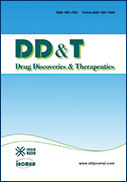
Drug Discoveries and Therapeutics
Fueling the quest for effective medical solutions.Drug Discoveries and Therapeutics is a highly regarded journal devoted to the advancement of knowledge in the field of medicine and pharmacology. Published by the International Research & Cooperation Association for Biological & Socio-Sciences Advancement in Tokyo, Japan, this journal serves as a vital resource for researchers, practitioners, and students interested in the latest developments in drug discovery and therapeutic strategies. With a Scopus ranking of #192 out of 826 in the General Medicine category, and positioning itself in the 76th percentile, it demonstrates a significant impact within the scientific community. The journal publishes original research articles, reviews, and innovative studies that address the complexities of drug development, therapeutic efficacy, and clinical applications. Researchers and clinicians can access valuable insights to enhance their practices and inform further studies as it continues to disseminate crucial findings essential for the advancement of medical science.
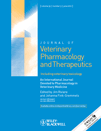
JOURNAL OF VETERINARY PHARMACOLOGY AND THERAPEUTICS
Advancing Veterinary Care Through Innovative ResearchJOURNAL OF VETERINARY PHARMACOLOGY AND THERAPEUTICS is a crucial publication in the field of veterinary medicine, dedicated to advancing knowledge and practices related to pharmacology and therapeutic interventions in animals. Published by WILEY, this peer-reviewed journal has been a reliable source of innovative research since its inception in 1978, and it continues to play an integral role in shaping veterinary pharmacology through its commitment to high-quality scientific discourse. With an impact factor reflective of its robust academic standing, the journal is categorized in the Q3 quartile for Pharmacology and Q2 for Veterinary (miscellaneous) as of 2023, highlighting its relevance and significance within these domains. It is indexed in Scopus with commendable rankings, particularly in General Veterinary, where it ranks #45 out of 194, placing it in the 77th percentile. This journal not only offers a platform for original research articles but also caters to the dissemination of practical applications and reviews that are essential for veterinarians, researchers, and students alike in enhancing animal health and welfare. Although not an open-access publication, its contributions remain accessible to those engaged in the veterinary sciences through institutional subscriptions. The journal's enduring legacy and forward-looking approach make it a vital resource for anyone interested in veterinary therapeutics and pharmacology.

CLINICAL PHARMACOKINETICS
Decoding the Complexities of PharmacokineticsCLINICAL PHARMACOKINETICS, published by ADIS INT LTD, is a premier journal dedicated to the field of pharmacology, with a distinguished reputation since its inception in 1976. With an impressive impact factor and categorized in the Q1 quartile for both general pharmacology and medical pharmacology, this journal ranks #29 out of 272 and #53 out of 313 in its respective categories in Scopus, highlighting its high academic influence and the quality of research it publishes. CLINICAL PHARMACOKINETICS serves as a vital resource for researchers, professionals, and students interested in the latest advancements in drug metabolism, therapeutic efficacy, and clinical applications of pharmacokinetic studies. As it continues to evolve through 2024 and beyond, the journal remains committed to fostering a deeper understanding of pharmacotherapy and its implications in clinical practice. While it does not currently offer open access, the journal ensures that cutting-edge research is accessible through various academic platforms.
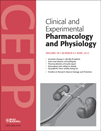
CLINICAL AND EXPERIMENTAL PHARMACOLOGY AND PHYSIOLOGY
Exploring Innovative Research for Clinical ExcellenceCLINICAL AND EXPERIMENTAL PHARMACOLOGY AND PHYSIOLOGY, published by WILEY, is a premier journal that serves as a vital resource for researchers, professionals, and students in the fields of pharmacology and physiology. With ISSN 0305-1870 and E-ISSN 1440-1681, this journal has established itself as a significant contributor to scientific dialogue since its inception in 1974. Currently spanning until 2024, it consistently publishes cutting-edge research addressing both experimental and clinical advancements in pharmacology and physiology. Recognized for its quality, it holds a Q2 ranking in the 2023 Pharmacology category and notable Q3 rankings in both Physiology and Medical Physiology. The journal's coverage of topical issues not only ensures a robust platform for innovative findings but also fosters collaborations across disciplines. Although not an Open Access journal, its curated content is invaluable for advancing knowledge, as evidenced by its solid Scopus rankings, which place it within the top percentiles of its field. Engaging with this journal means staying at the forefront of research that shapes clinical practices and experimental methodologies.
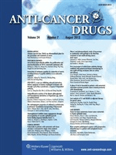
ANTI-CANCER DRUGS
Leading the Charge in Cancer Drug DevelopmentANTI-CANCER DRUGS is a leading journal in the domain of cancer research and pharmacology, published by Lippincott Williams & Wilkins. With its inception dating back to 1990 and ongoing publication through 2024, this journal serves as a vital resource for researchers, clinicians, and students interested in the latest advancements and discoveries in cancer therapeutics. Although classified in the Q3 quartile across relevant categories such as Cancer Research and Oncology, its growing impact is evidenced by its competitive Scopus rankings, positioned within the 30th to 52nd percentiles across various disciplines. The journal remains committed to promoting innovative research that can translate into effective anti-cancer strategies, providing valuable insights into drug development and applications. While it does not currently offer open access, the journal continues to attract a sophisticated readership, making it an essential platform for disseminating significant findings in the ever-evolving field of oncology.

CPT-Pharmacometrics & Systems Pharmacology
Unlocking the potential of systems pharmacology for improved therapies.CPT-Pharmacometrics & Systems Pharmacology, published by WILEY, is a leading open access journal dedicated to advancing the fields of pharmacometrics and systems pharmacology. Since its inception in 2012, it has established itself as a vital resource for researchers and practitioners, boasting a remarkable impact factor and occupying prestigious Q1 quartiles in categories such as Cardiology and Cardiovascular Medicine, Modeling and Simulation, and Pharmacology (Medical). The journal covers a broad spectrum of topics aimed at enhancing the understanding of drug development, efficacy, and patient safety through innovative modeling and simulation approaches. With its consistent ranking in the top tiers of its field, CPT-Pharmacometrics & Systems Pharmacology provides invaluable insights and fosters scholarly dialogue among its audience, including researchers, educators, and students. The journal is accessible to all, promoting knowledge dissemination and collaborative growth in the pharmacology community.
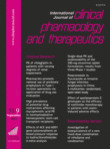
INTERNATIONAL JOURNAL OF CLINICAL PHARMACOLOGY AND THERAPEUTICS
Advancing pharmacological knowledge for a healthier tomorrow.INTERNATIONAL JOURNAL OF CLINICAL PHARMACOLOGY AND THERAPEUTICS, published by DUSTRI-VERLAG DR KARL FEISTLE in Germany, is a vital scholarly platform dedicated to advancing the field of pharmacology through rigorous research and innovative therapeutic strategies. Established in 1994, this journal has maintained its relevance in the evolving landscape of clinical pharmacology, achieving a Q3 rank in both general and medical pharmacology categories as of 2023. With an ISSN of 0946-1965, it is positioned as an essential resource for researchers, healthcare professionals, and students seeking to enhance their understanding of drug therapy and pharmacological applications. Though it currently does not offer open access, its comprehensive scope covers a wide array of topics within pharmacology, promising to contribute significantly to scientific discussions and knowledge dissemination from 1994 to 2024. Whether you are looking for the latest studies or historical insights, the journal remains a fixture for anyone invested in the pharmacological sciences.
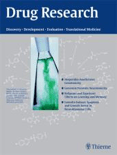
Drug Research
Transforming Ideas into Therapeutic RealitiesDrug Research, published by GEORG THIEME VERLAG KG, is a pivotal journal housed in the vibrant realm of pharmacology and drug discovery. With a commitment to advancing the understanding of medicinal substances, this journal serves as an essential resource for researchers, professionals, and students dedicated to the field. The journal boasts an ISSN of 2194-9379 and an E-ISSN of 2194-9387, reflecting its dual commitment to print and digital accessibility. Despite its status as a Q3 journal in both Drug Discovery and Miscellaneous Medicine categories as of 2023, it continues to offer valuable insights with a focus on the latest innovations, methodologies, and findings in drug research. Based in Germany, Drug Research promotes scholarly communication and collaboration within the scientific community, ensuring that its contributions remain impactful in shaping future therapeutic discoveries. The journal is indexed in relevant databases, enhancing its visibility and reach, thus fostering a robust academic dialogue.
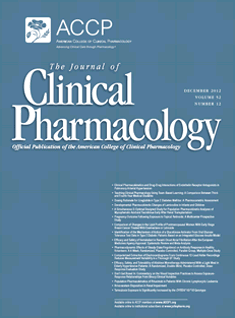
JOURNAL OF CLINICAL PHARMACOLOGY
Exploring the Frontiers of Pharmacological ResearchWelcome to the Journal of Clinical Pharmacology, an esteemed publication in the field of pharmacology and medical pharmacology, published by Wiley. Since its inception in 1973, this journal has been at the forefront of disseminating innovative research findings and comprehensive reviews that enhance our understanding of drug therapies and their clinical applications. With an impact factor that reflects its strong reputation and a Scopus ranking placing it in the 64th percentile among 272 journals in medical pharmacology, the journal stands as a critical resource for researchers, healthcare professionals, and students alike. Although currently not an Open Access journal, it provides invaluable insights into therapeutic drug use and safety, the pharmacokinetics of drugs, and the development of new therapeutic strategies. The journal's commitment to advancing the field through high-quality, peer-reviewed articles ensures it remains a vital asset in the continuously evolving landscape of clinical pharmacology.